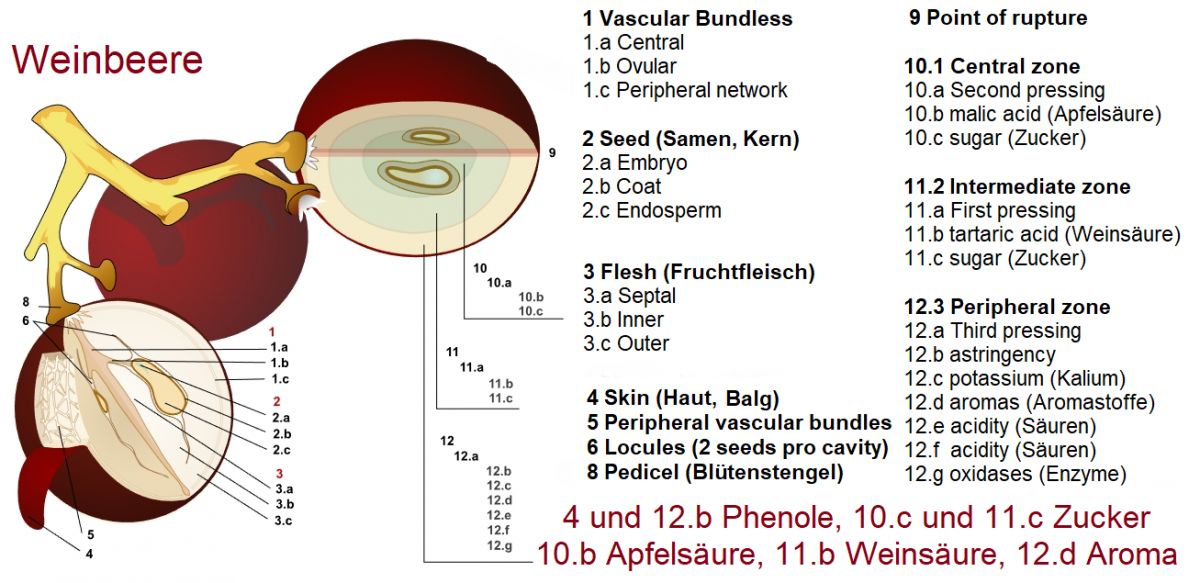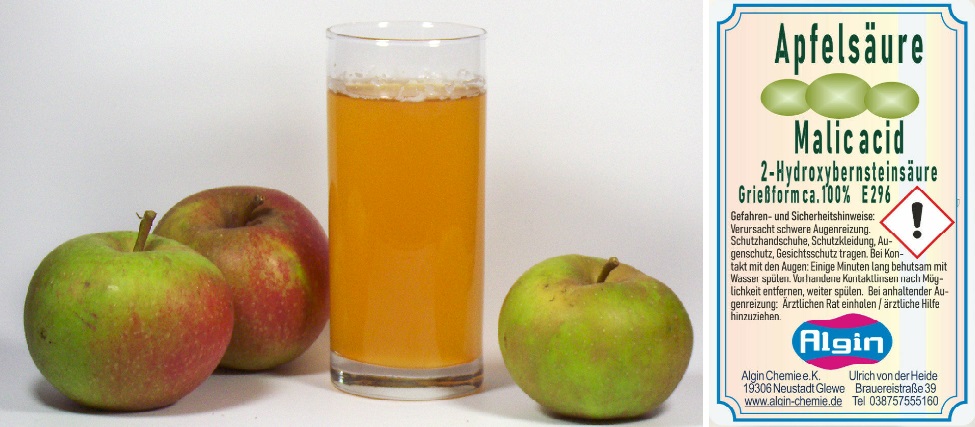This chemical compound (also known as malic acid, hydroxy succinic acid or malic acid) is one of the three most important organic acids in wine alongside tartaric acid and citric acid. It is mainly found in unripe apples, barberries, quinces, gooseberries, rowanberries and grapes. It was given its name because it was first isolated from apple juice and described by the German pharmacist Carl Wilhelm Scheele (1742-1786) in 1785. Apple juice from special apple varieties is also used to produce cider, and French cider in particular has a long tradition.
It has a high content of up to 20 g/l in the unripe grapes and between 0.5 and 6 g/l in the wine. Parallel to the storage of sugar during berry ripening, the must acids are reduced. Malic acid is converted into sugar during cell metabolism at a temperature between 20 and 30 °C, while tartaric acid is only broken down at higher temperatures. This is why the remaining proportion of tartaric acid is always higher in ripe grapes. Tartaric acid is considered a soft, pleasant acidity, whereas malic acid is a more aggressive-tasting acidity, which makes the wine taste angular (hard).

Grape must & wine
The proportion of different acids in grape must depends on the grape variety and weather conditions, among other things. In cool years with unripe grapes, the proportion of malic acid is generally high, whereas in warm, sunny years it is low. It is therefore the high malic acid content due to imperfect ripeness that makes wines appear acidic or inharmonious. Malic acid is tolerated to a limited extent in white wines, as it adds freshness to young wines. Early-ripening varieties that ripen at high late summer temperatures have an acidity deficit in the autumn due to the temperature-related faster decomposition of must acids, which is why they are mainly used for the production of grape juice or semi-fermented musts. Malic acid is generally undesirable in red wines, so malolactic fermentation (biological acid degradation) is used to convert it into the milder lactic acid.

Further information
A list of all wine ingredients can be found under the keywords flavourings, total extract and agents in winemaking as well as all types of acid in wine under acids.
For the production of alcoholic beverages, see Champagne (sparkling wines), distillation (distillates), speciality wines, spirits (types), winemaking (wines and wine types) and wine law (wine law issues). All work and aids in the vineyard during the vegetation cycle are listed under vineyard care.
Graphic: By Mariana Ruiz Villarreal(LadyofHats), public domain, link
edited by Norbert F. J. Tischelmayer, March 2019
Apples (Boskoop) and apple juice: by Metoc - Own work, CC BY-SA 3.0, Link
Voices of our members

wein.plus is a handy, efficient guide to a quick overview of the colourful world of wines, winegrowers and grape varieties. In Wine lexicon, the most comprehensive of its kind in the world, you will find around 26,000 keywords on the subject of grape varieties, wineries, wine-growing regions and much more.
Roman Horvath MW
Domäne Wachau (Wachau)